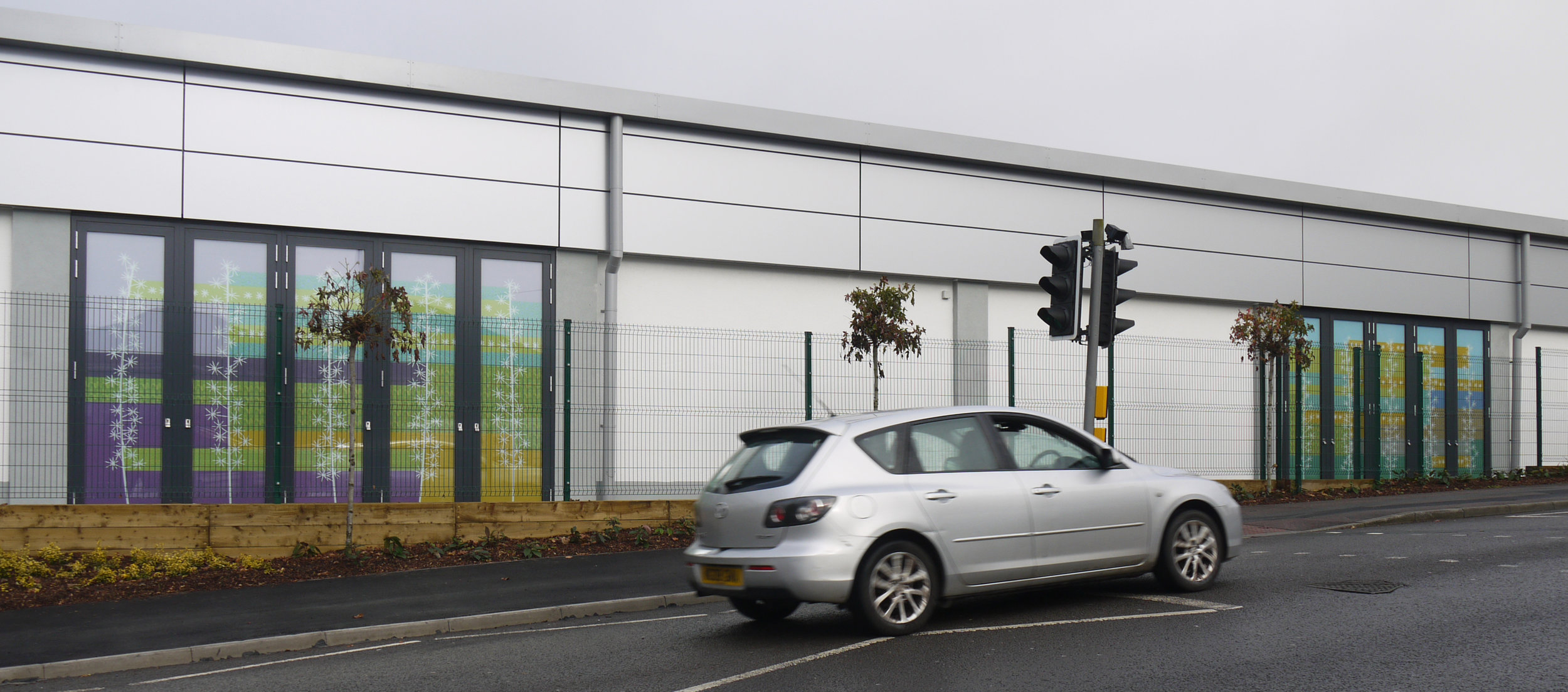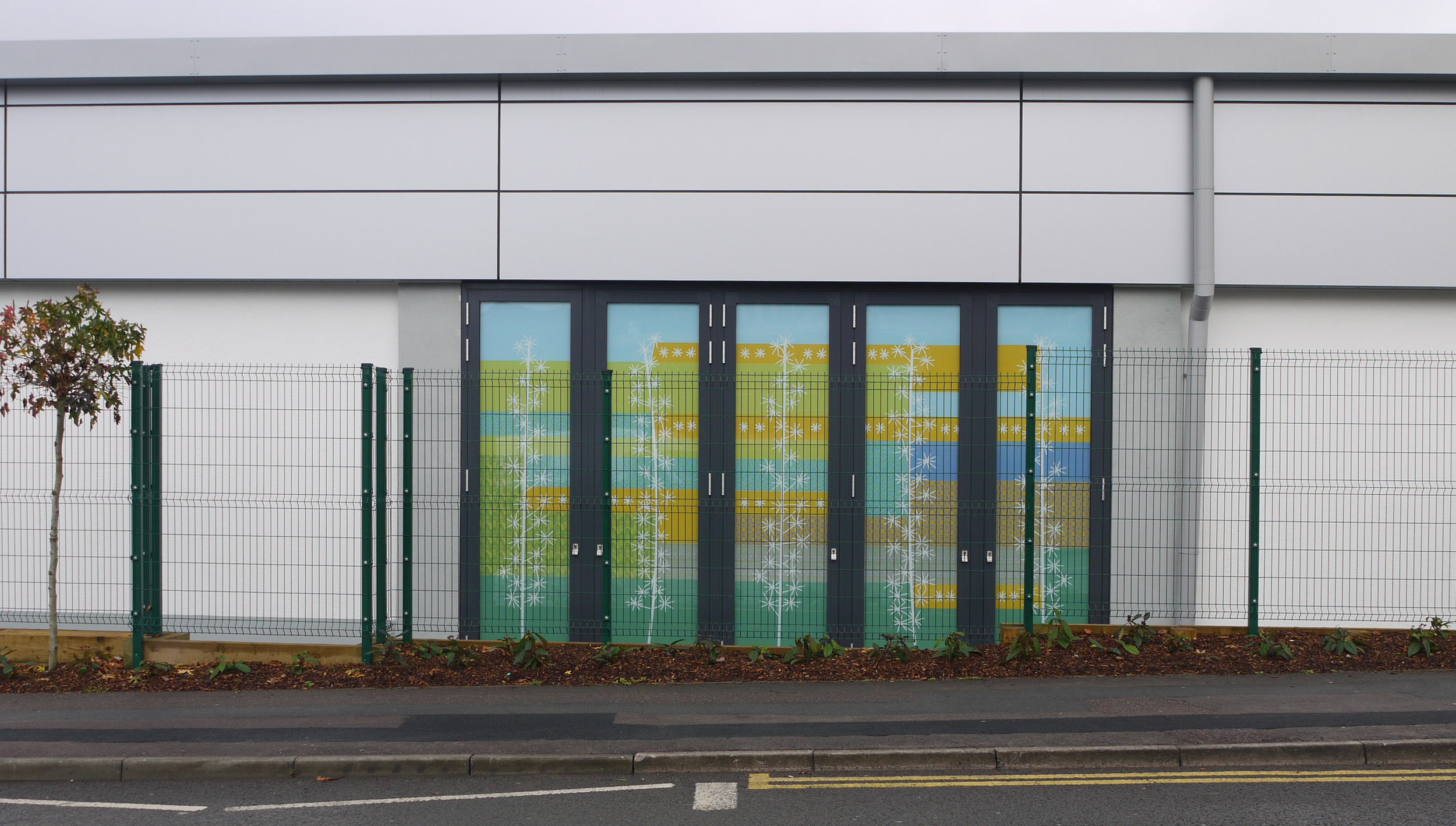Detail of 1919 window designed by Edward Prynne, made by J.Jennings.
Usually, you can find a great bit of detail in any old stained glass window. I saw this wonderful cupid at the bottom of one of a series of six in St Thomas a Becket, Pagham, West Sussex, helpfully signed with the inscription of the designer and the maker, "Edwd. A.F.Prynne, J. Jennings, AD 1919". The backgrounds to the figures are smothered with clumps of plants between streams of water on pieces of glass whose shape reminded me of the flints that some buildings in this area are made of.
Wall of St Thomas a Becket, Pagham. Background detail from one of the six Edward Prynne windows
Details from the east window, with signatures at bottom right.
The whole of the east window is a lovely composition of old glass. The details I have picked out include figures in bright coloured glass with rich silverstain. In the bottom right of each photo is another useful inscription - on the left "Re-glazed & re-arranged 1939 HMOT" (Howard Martin Otto Travers), on the right "RE-LEADED AD 1919 J.Jennings".
It was good to have this reminder of the process as I was on my way to teach a stained glass course at West Dean College. At the end of the week I could see lots of links between the windows in Pagham Church and the students' panels, see below. These include representations of the sea in cut shapes and glass paint, clump shaped pieces of glass with landscape painting, and the inspiring backdrop of a wall in the world's largest flint building (according to one of my students, an ex- architect).
Student windows from West Dean College: sea, rainy landscape, composition in front of flint wall at West Dean.
Pagham: seaside coffee break, seaside architecture, seaside window.
Click images to enlarge














